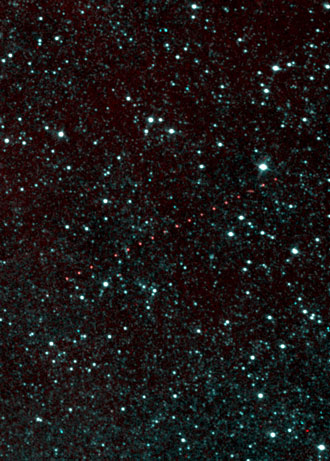The pioneering NEOWISE observatory celebrates a milestone, even as the end of the mission draws near.

NASA / JPL
A repurposed space mission is about to come to an end. NASA’s Near-Earth Object Wide-Field Infrared Explorer (NEOWISE), reaches its ten-year anniversary this month. The repurposed mission began on December 13, 2013, using an existing spacecraft’s infrared capabilities to start a decade-long hunt for asteroids and comets.
NEOWISE: The Origin Story
The mission began as WISE, which launched in 2009 from Vandenberg (then Air Force Base) in California. During its initial, 10-month nominal mission, WISE surveyed the sky across an infrared range that, due to Earth's atmosphere, isn't accessible to terrestrial telescopes.

NEOWISE / NASA / JPL
WISE made a diverse range of discoveries during its two surveys of the infrared sky, including the first Earth Trojan (2010 TK7), a pair of close brown dwarf stars (Luhman 16, then the closest brown dwarfs at 6.5 light-years distant) and the first Y-type brown dwarf (WISE J033605.05-014350.4). WISE also uncovered tens of millions of active supermassive black holes.

By 2011, the WISE spacecraft ran out of cryogenic coolant needed to keep the cameras sensitive to longer infrared wavelengths, as had also happened with the infrared-seeing Spitzer Space Telescope. WISE was put into hibernation in February 2011. But in late 2013, it saw new light as the reactivated NEOWISE mission. That's when it began scouring the sky for comets and asteroids heated by the Sun.
The telescope can still see just fine in the infrared bands centered on 3.4 and 4.6 microns, and in the past decade, NEOWISE has surveyed the sky in these bands 20 times. The result: 1.45 million measurements of more than 44,000 objects in the solar system, which have enabled astronomers to characterize and refine known these objects' reflectivity, or albedo. The albedo in turn speaks to an object's composition.
During this time, NEOWISE discovered 215 near-Earth objects, including 25 comets. Probably the most memorable discovery was comet C/2020 F3 NEOWISE, which went on to become a fine comet for the unaided eye in July 2020.

David Dickinson
But soon, NEOWISE will be coming to an end. With no means of raising its Sun-synchronous orbit, the spacecraft is gradually spiraling in toward Earth. It's expected to succumb to atmospheric drag and reenter the Earth’s atmosphere by early 2025. Space-Track.org isn’t listing NEOWISE in its long-range reentry predictions just yet, though.
The approaching peak of Solar Cycle 25 plays a role in the spacecraft's demise, because stronger solar activity causes Earth's atmosphere to puff out and enhances the drag that NEOWISE experiences.
“The mission has planned for this day a long time,” says Joseph Masiero (Caltech/IPAC) in a recent press release. “We are at the mercy of solar activity, and with no means to keep us in orbit, NEOWISE is now slowly spiraling back to Earth.”
What’s Next: NEO Surveyor
The end of NEOWISE will leave a gap in coverage when it comes to the hunt for near-Earth asteroids. Earthbound sky surveys, including PanSTARRS and the Catalina Sky Survey, will continue to scour the sky. Assets such as JWST and the Nancy Grace Roman Space telescope (launching in 2027) also see in the infrared, though they are not dedicated to hunting for small solar system bodies.
The next mission planned as a true successor to NEOWISE is NEO Surveyor. For a planned 12 years, NEO Surveyor would keep watch from the L1 Lagrange point of the Sun-Earth system (that is, its orit would be between Earth and the Sun). That vantage would allow it to see asteroids approaching our planet from the interior of Earth’s orbit.
The Chelyabinsk event highlighted the need to cover our sunward blind spot, as the ~20-meter (65-foot) meteor crept up on us from the same direction, exploding over the Russian city of Chelyabinsk on the morning of February 15, 2013.

Just when NEOWISE will take to the skies is still up in the air. This on-again, off-again mission has gone through various iterations as the Sentinel Space Telescope, NEOCam, and the Near Earth Object Surveillance Mission. In late 2022, the project passed Key Decision Point C review, which approves the mission for flight, and NASA's 2023 budget allowed $90 million for NEO Surveyor's construction. However, its launch date may still be delayed until 2027 or 2028.
The days for NEOWISE may be numbered, but although there will be a small gap in coverage, we can look forward to the NEO Surveyor taking up the search for near-Earth asteroids in the coming years.
 0
0









Comments
You must be logged in to post a comment.